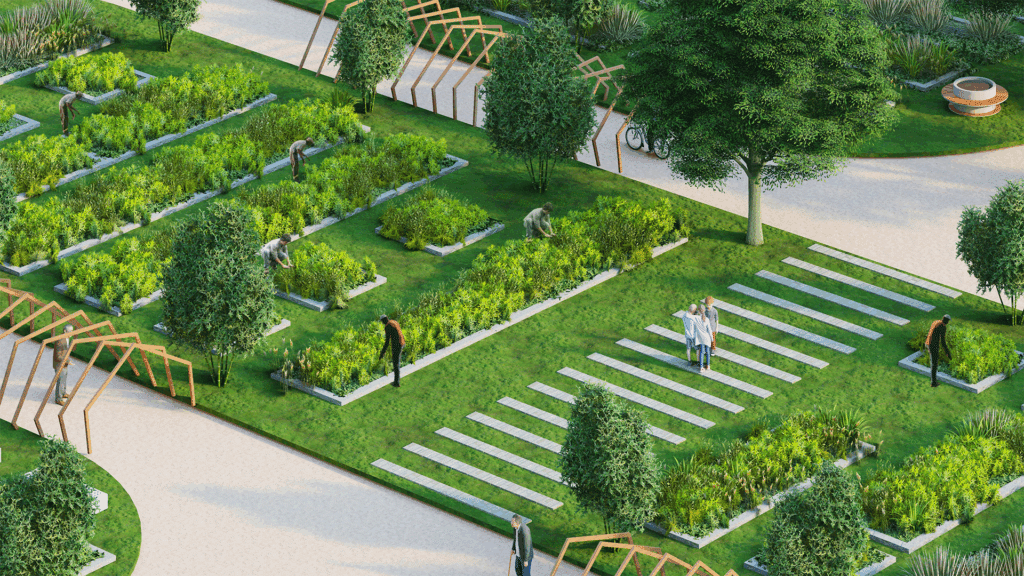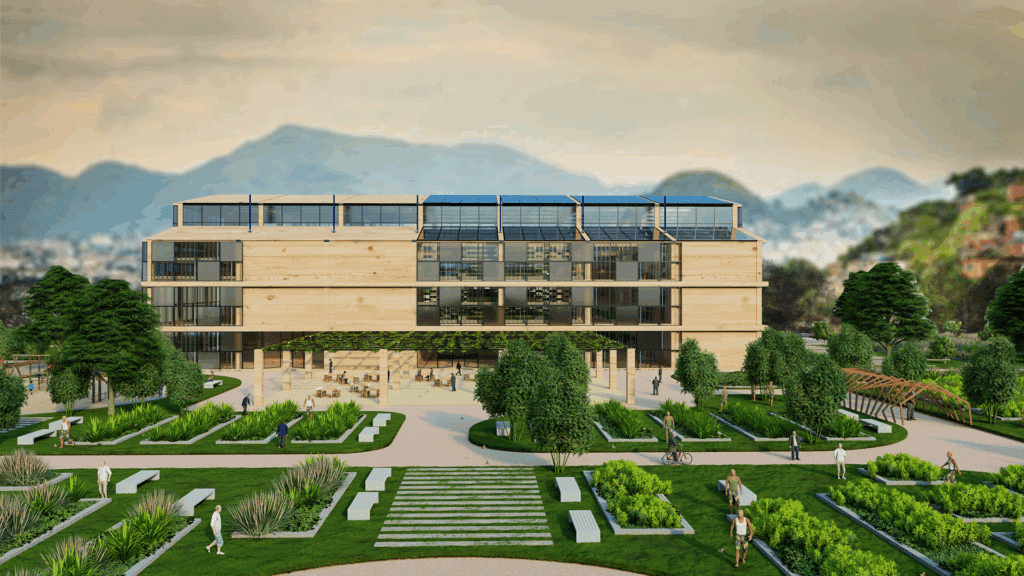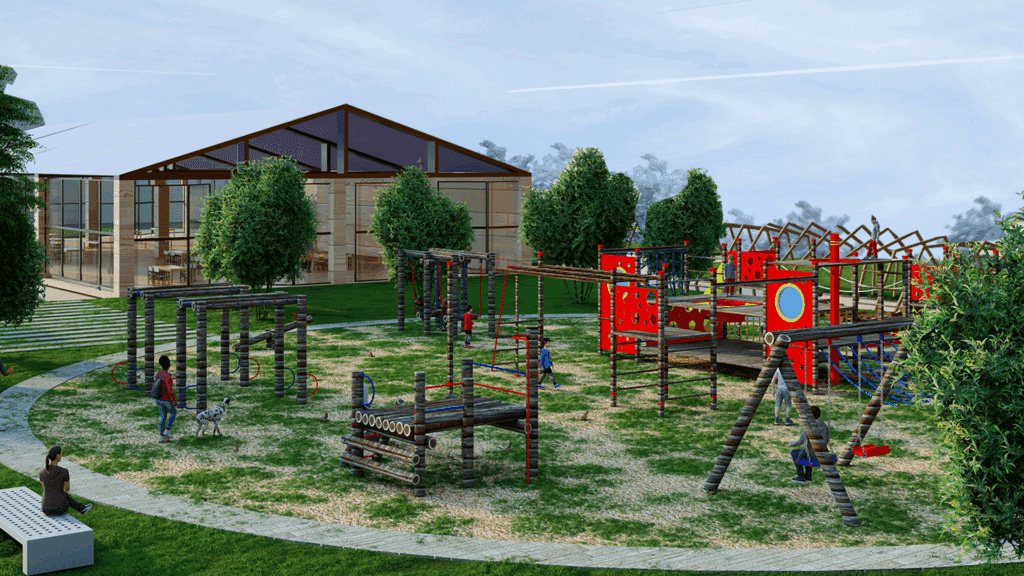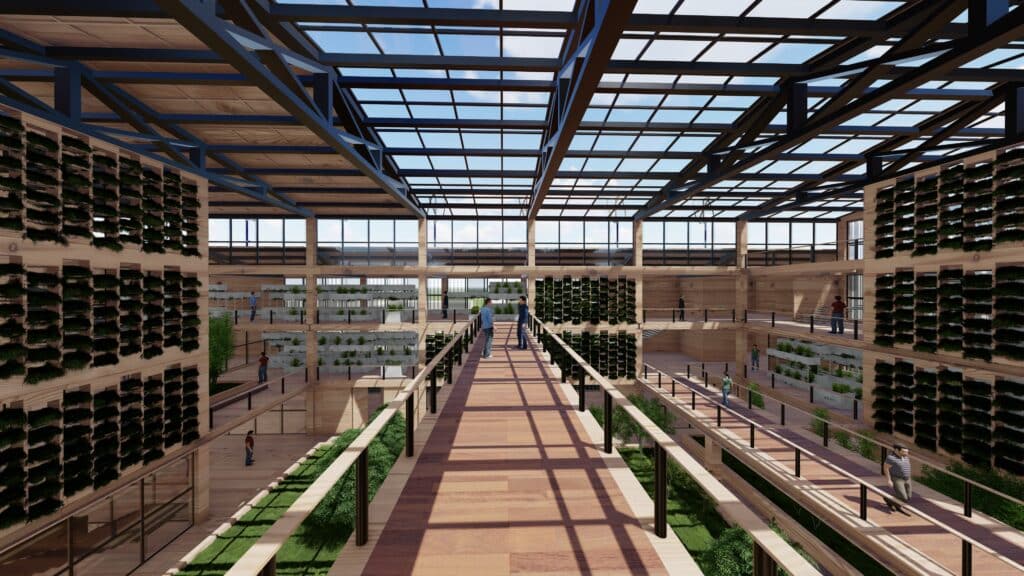Abstract
Our project, addresses the need for Productive Justice for Self-Sufficiency in Mesquita, a municipality in Rio de Janeiro marked by socio-economic challenges such as food insecurity, water scarcity, infrastructure deficiencies, and a strong dependence on government subsidies.
Our strategy transforms residual urban spaces-abandoned plots, unused corners, canal edges-into a Productive Web of interconnected hubs focused on food, water, energy, and waste self-sufficiency Urban Matrix is a scalable model that turns neglected urban voids into engines of community empowerment, aiming to restore balance, equity. and self-reliance in Mesquita’s urban fabric.
Introduction – Productive Justice
Productive Justice
“Productive justice for self-sufficiency” envisions a world where fairness fuels empowerment — where communities cultivate their own strength through equitable access to resources, knowledge, and opportunity.
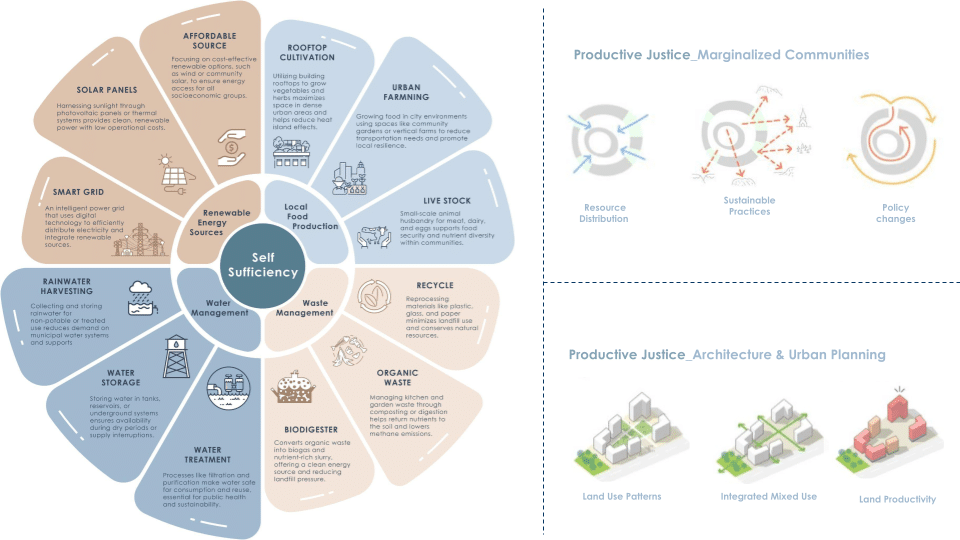
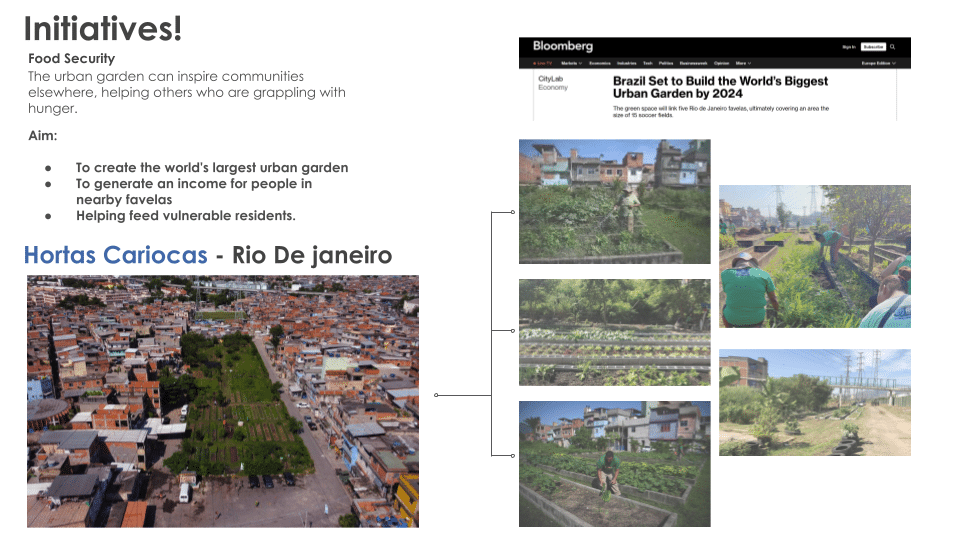
Urban Growth & Sprawl – Rio de Janeiro

Urban Densification – Vegetation and Agriculture
In the focus of Rio de Janeiro, we typically observe an increase in vegetation cover in forests and grasslands,
rather than in farmlands and agricultural areas.

Urban Densification and Fresh water shortage
Through the indicators the Northern & Northeastern region remain deprived of fresh/usable water supply while the hypercenter gets 85% of freshwater to the households.

Urban Densification and Facilities/Infrastructure
Infrastructurally, the Map indicated that the Urbanized sectors have more access to Basic Amenities rather than North and Northeastern Regions.
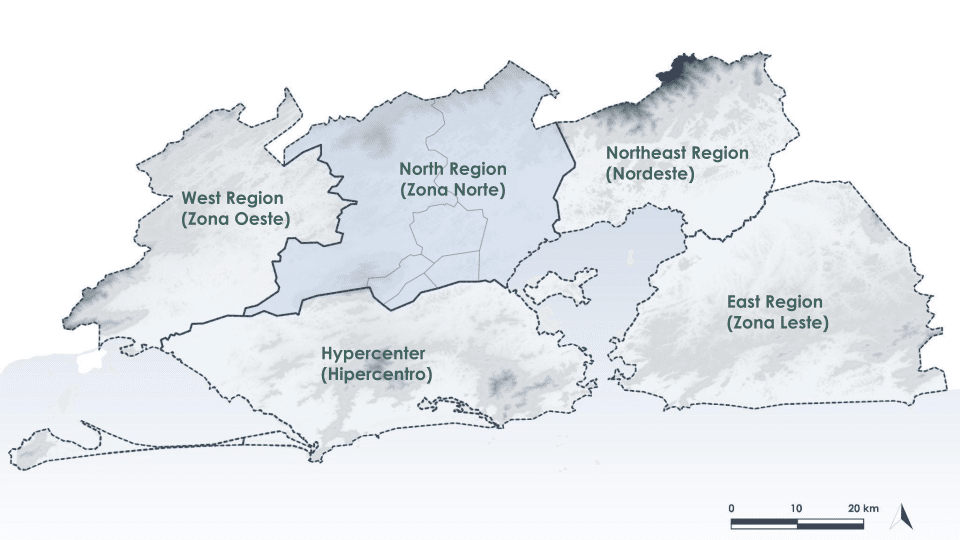
Micro Regions
The Rio de Janeiro Metropolitan Region is divided into five macro-regions (“macrorregiõesˮ) to enhance urban planning
and address regional disparities.
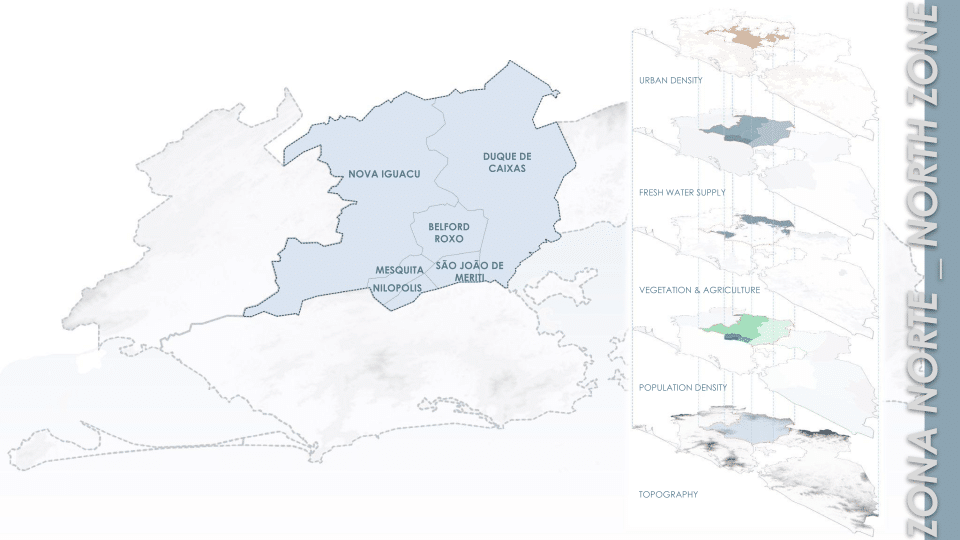
The North region faces ongoing urban densification and population growth.
Large numbers of informal settlements lacking infrastructure. Managing the pressures of rapid urban growth in a region with many social needs.
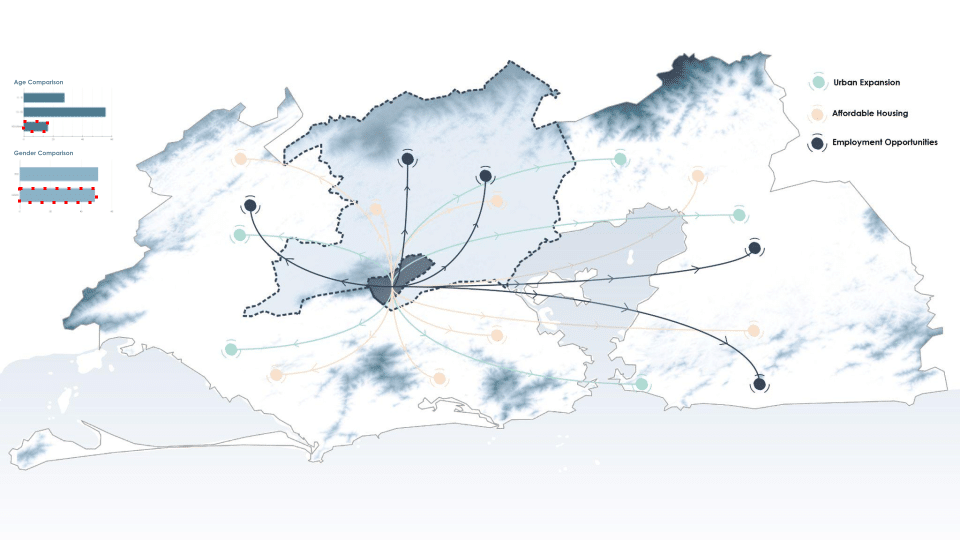
POPULATION INFLUX AND DIVERSITY
The Urban Matrix or the Productive Web is an idea of using the voids and residual spaces , abandon plots, Abandoned buildings.
The North Zone of Rio has experienced a population influx driven by the availability of more affordable housing, particularly in cities like Mesquita and Nilópolis. These areas have seen significant urban expansion; however, much of this growth remains dependent on government subsidies.

Rio de Janeiro continues to rely on neighboring regions for its food supply and also maintains a significant dependence on international imports.
Mesquita – City dependent on subsidies
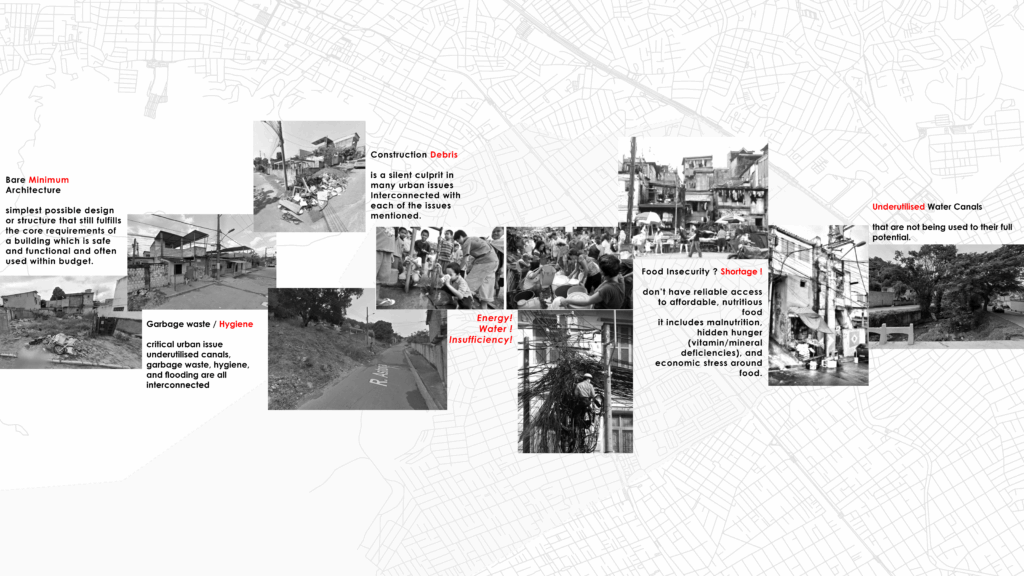
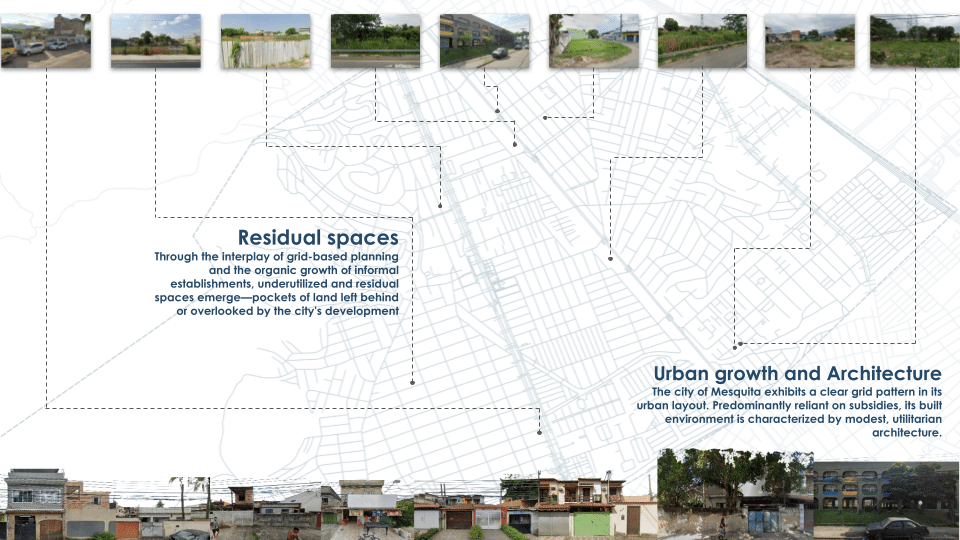
Urban Matrix – Proposed Strategy
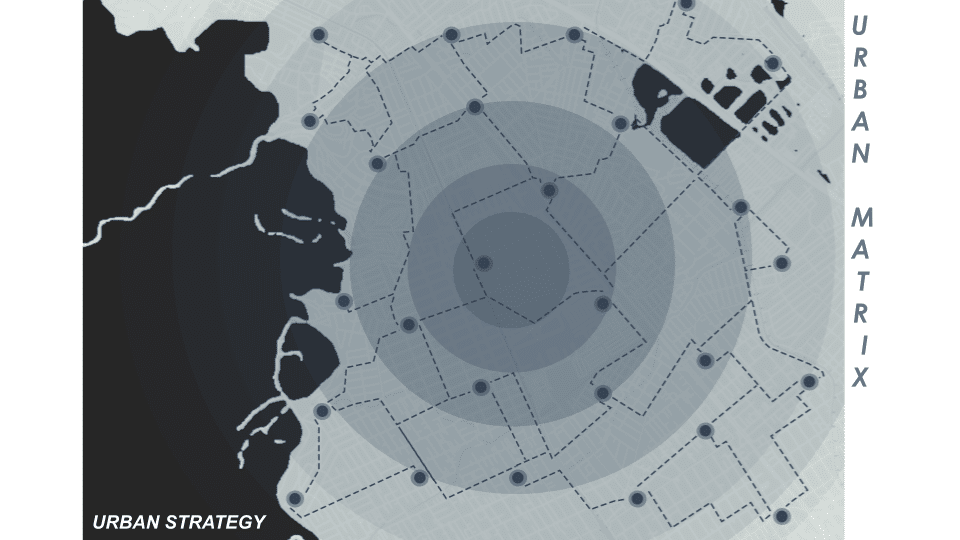

Why?
Reducing insecurities
The core concept behind the Urban Matrix strategy is to address the critical insufficiencies in food, water, and energy within the city of Mesquita. This approach also emphasizes the recycling and reuse of waste, alongside the integration of water channels designed to mitigate flooding in low-lying areas.

Where?
Residual Spaces – Areas of Intervention
Residual spaces—such as awkward corners between buildings or narrow strips of land along highways—are often overlooked, underutilized, and poorly maintained. Lacking clear ownership or a defined purpose, these neglected areas are typically byproducts of larger planning decisions.

What?
Locate facilitators – Create productive hubs
The Urban Matrix envisions key facilitators—such as cafés, supermarkets, and restaurants—as supportive anchors for productive hubs. It also proposes the transformation of dumping grounds into organized systems for waste segregation and management, while utilizing canals as active agents in the rejuvenation of the city’s water infrastructure.

The Productive Webs
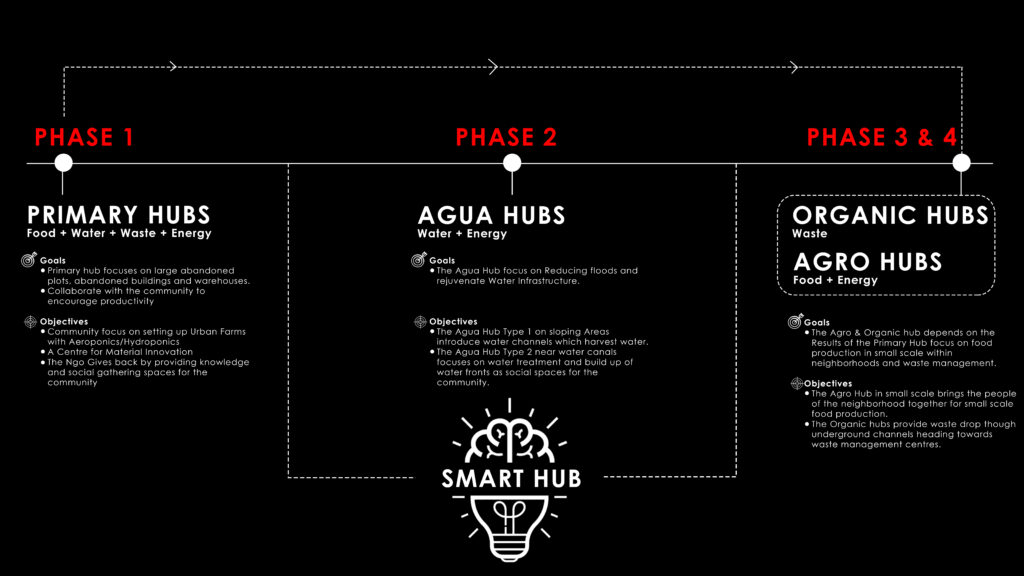
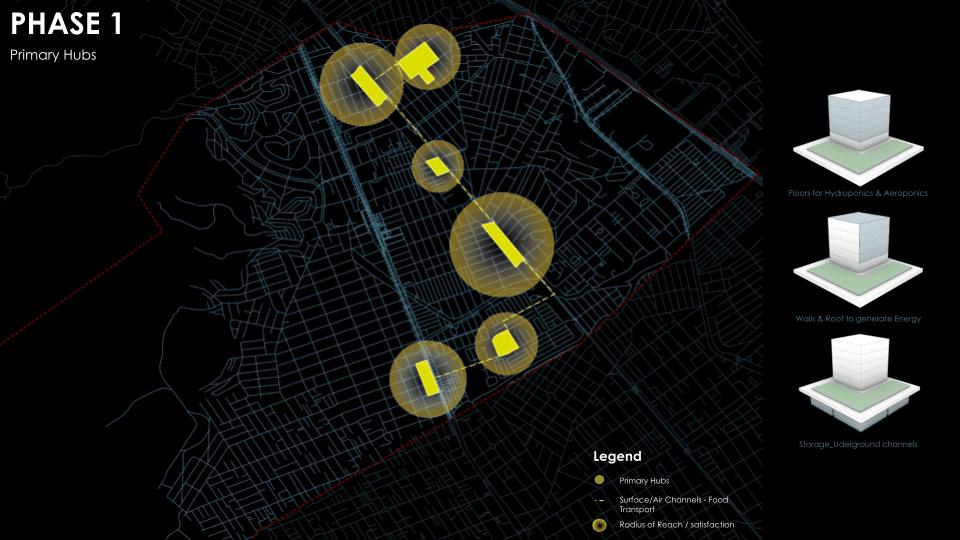
The Spine of Mesquita
The primary hubs in the initial phase serve as testing and validation platforms, as well as pilot systems to explore and shape the community requirements for the subsequent phases.
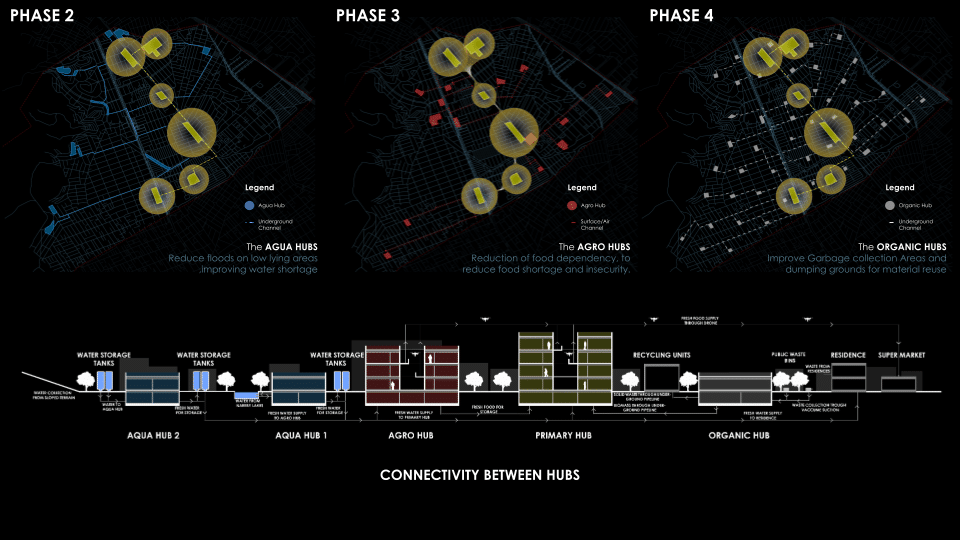

Self Sufficiency plan for Mesquita
Imagine a city where every surface is functional — collecting water, generating energy, or growing food. Rainfall is no longer a flood risk,
but a resource managed by algorithms and stored in elegant, bio-inspired systems that blend into the urban landscape.
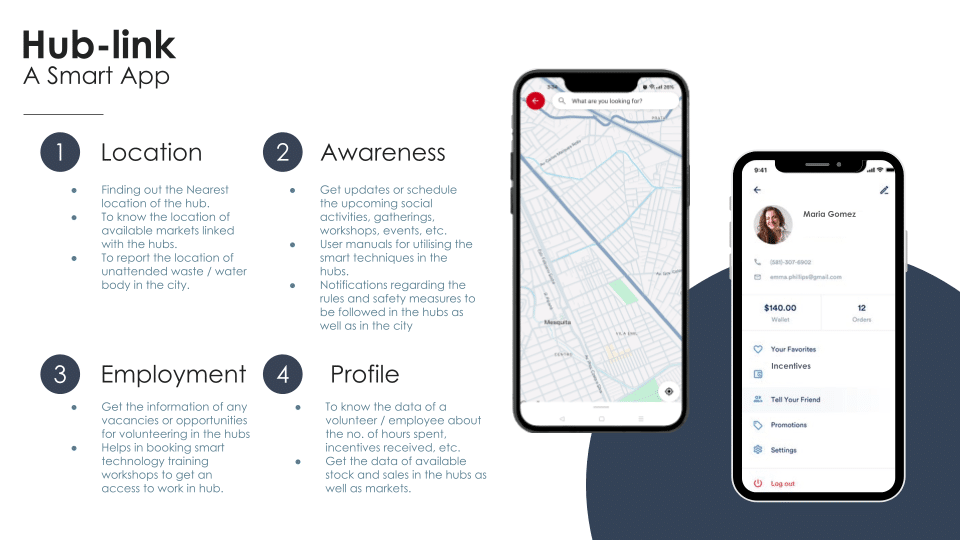
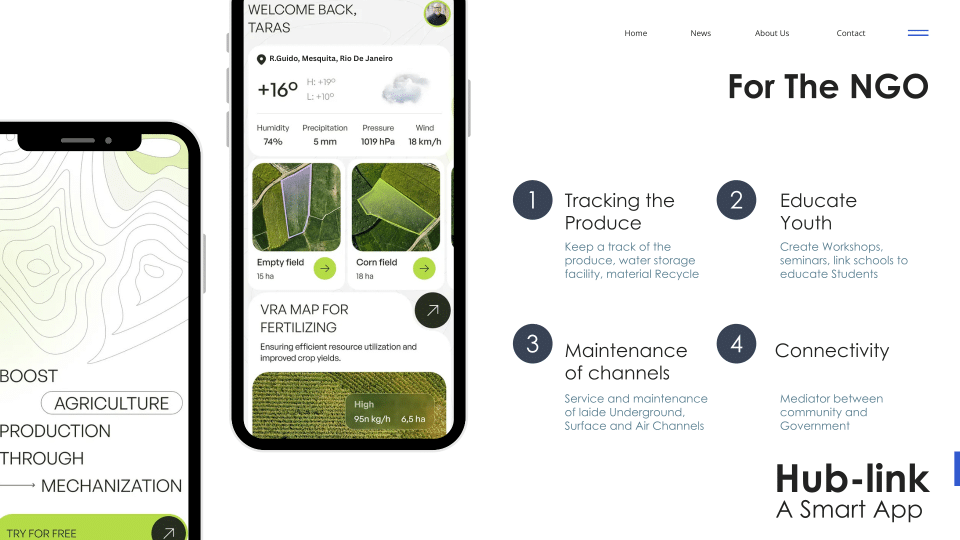
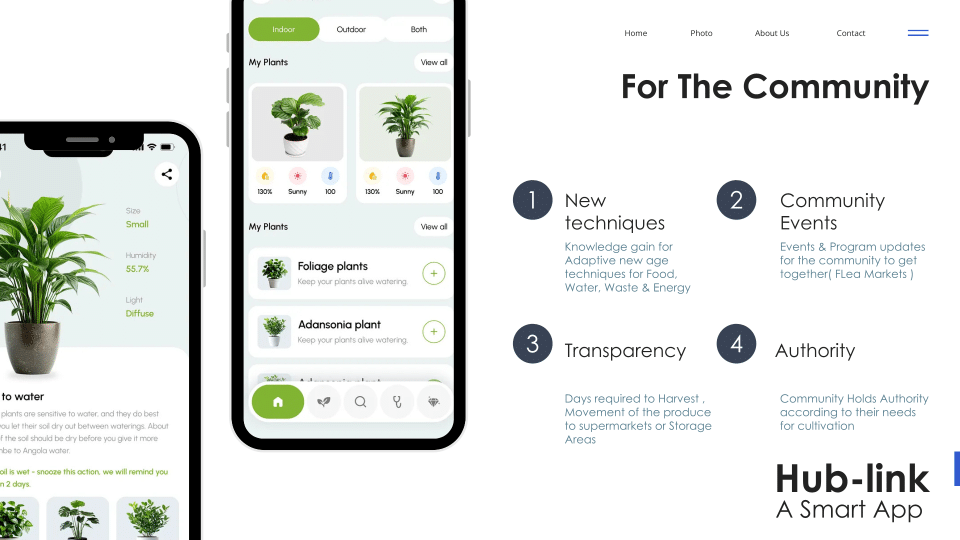

The Productive Hubs
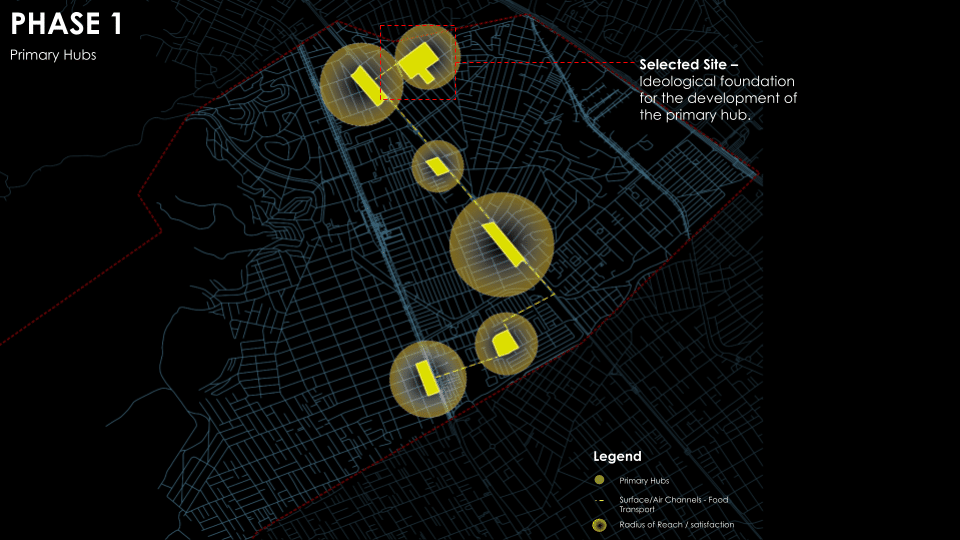
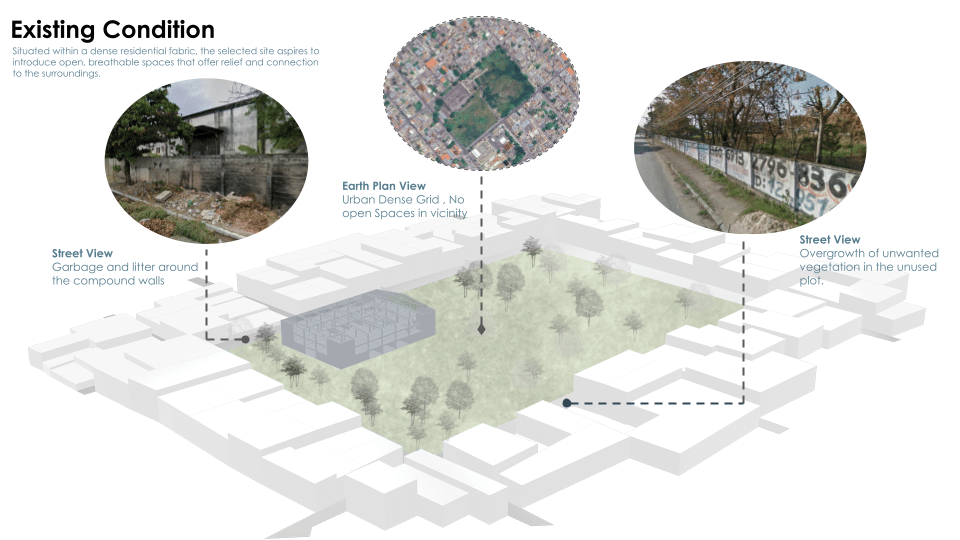
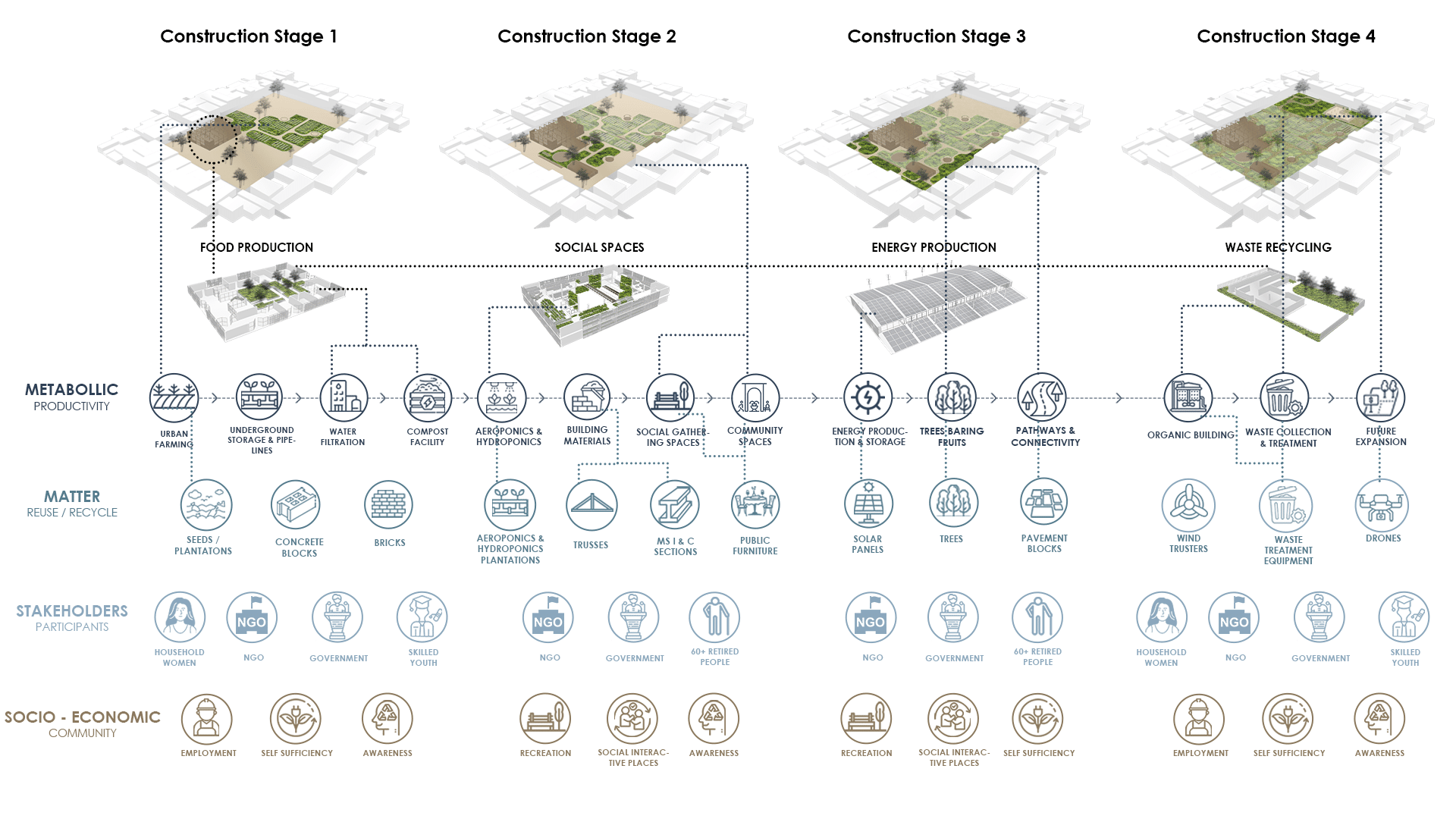
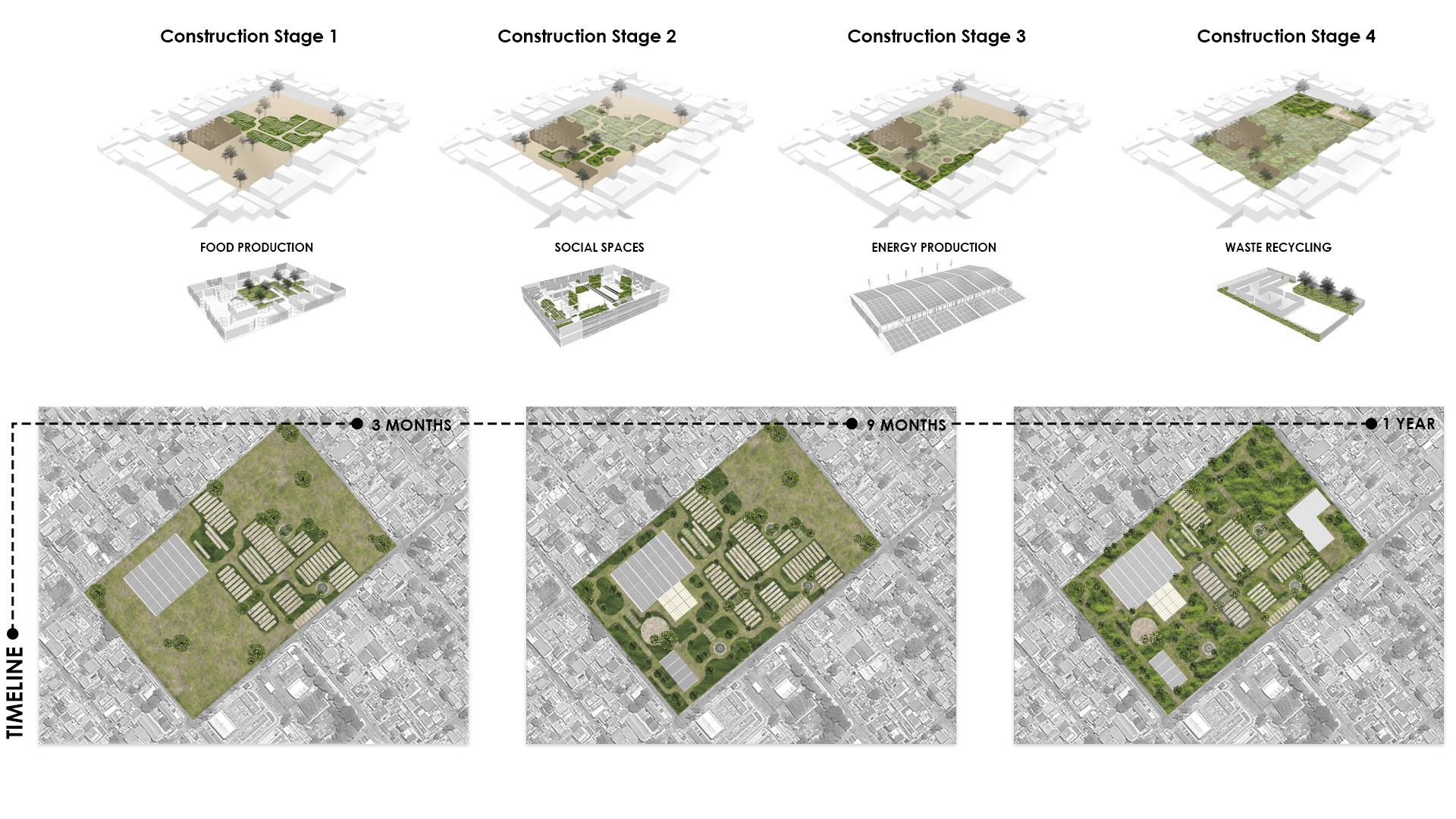
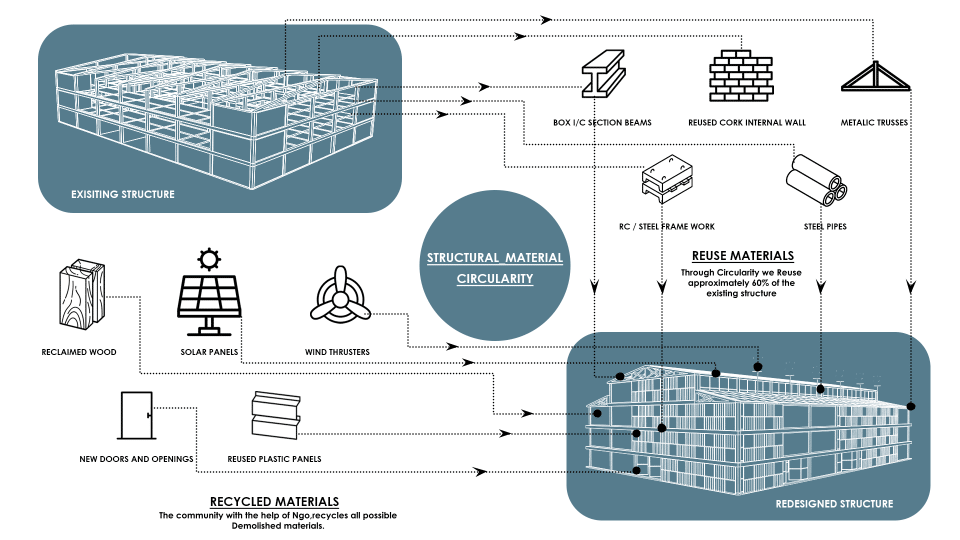
Design Ideology

